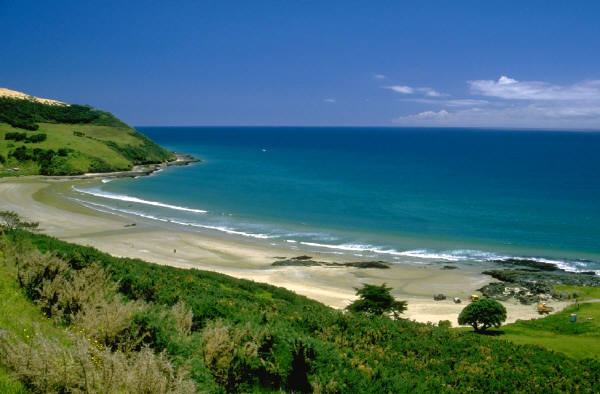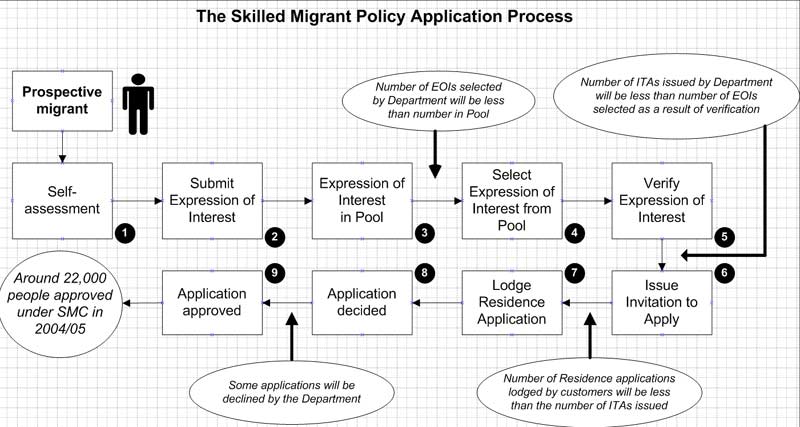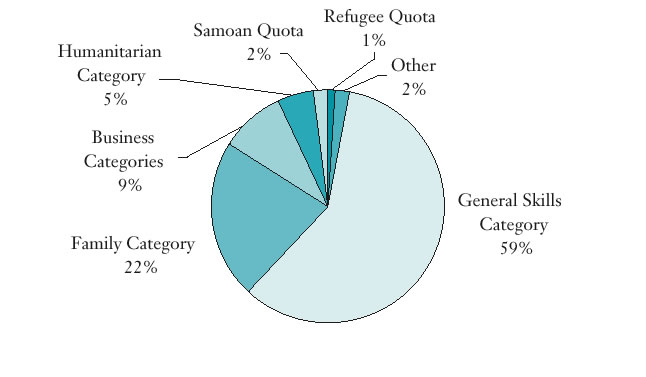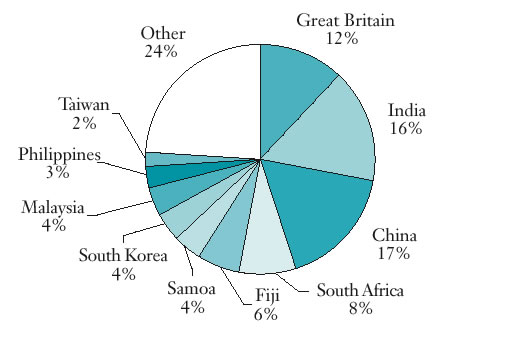Moving Down Under
Australia Or New Zealand? How to Get InI'd move to Los Angeles if New Zealand and Australia were swallowed up by a tidal wave, - Russell Crowe
Billboard in the London Underground Both countries operate a points system for people wanting residency. Points are given for qualifications, work experience, age, English language ability and financial resources. New Zealand also gives extra points for job offers. For New Zealand, essentially speaking good English, having a degree, relevant work experience and a job offer should make it easy. For Australia, this may not be enough. But Information Technology workers are welcome in both countries, even if they lack formal qualifications. Please note: If you apply from outside Australia, you will be applying to migrate. If you are applying in Australia, you will be applying for permanent residence. All Australian skills-related applicants must be under 45 and should have post-secondary education..
G'day Mate!
Migration ProgramThere are two programs designed to help people wanting to come to Australia permanently. One is the migration program which is made up of:
The migration program for 2004-05 has 120,000 places available for migrants, with a strong focus on attracting skilled people and people who agree to live in regional areas of Australia. Humanitarian ProgramThe second program is the separate humanitarian program which is designed for refugees and others in special humanitarian need. A major component of the humanitarian program is the offshore resettlement program, which assists people in humanitarian need overseas for whom resettlement in another country is the only option. The onshore protection component is for those people already in Australia who arrived on temporary visas or in an unauthorised manner, and who claim Australia’s protection. The size of the 2004-05 humanitarian program is 13,000 places. See Moving to Australia: Animal Welfare (an external site) - gor what to do if you want to take your pet. And see www.immi.gov.au for current information on immigrating to Australia!
Kia Ora Bro! Welcome to Godzone!
The population of New Zealand was estimated to be 4.061 million as of 30 June 2004. Frankly, New Zealand's immigration policies have become entirely too complex to summarise. The gist of it, it seems to me, is that you need to be healthy, and either well-educated. wealthy, closely connected to one or more NZ citizens, have a skill the country really needs, or else have a job offer. But check it out for yourself! Visit www.immigration.govt.nz/migrant. From that site: General InformationFor the 2004/05 financial year, Government has allocated 45,000 (up to 50,000) places for people to be granted New Zealand residence under the immigration programme. The categories under the programme are as follows: made up of:
As a result, 27,000 (up to 30,000) people will be approved under the Skilled/Business Stream as part of this year’s immigration programme. Of these, 19,000 (up to 22,000) to people will be under the Skilled Migrant Category (SMC), with the remaining 8,000 from the closed General Skills, Work to Residence, Investor, Entrepreneur, and employees of relocating businesses categories.
New Zealand Immigration FactsAugust 2002Some Facts About Residence Approvals in 2001/2002
Residence PolicyPeople wishing to migrate to New Zealand may gain residence under one of the categories listed in the table below. Residence applications are considered on the basis of whether the “Principal Applicant ” meets the policy criteria. The Principal Applicant may include their partner and dependent children in their application. All applicants must meet standard health and character requirements. CategoryGeneral Skills
Investor
Entrepreneur
Business Employees
Family
Samoan Quota
Refugee
Source: immigration.govt.nz New Zealand Immigration Service Te Ratonga Manene
For more articles on immigration, emigration, undocumented workers, overstayers, how to get in: NZ and Australia, costs, H1-B workers, scams, and quality of life please click the "Up" button below to take
you to the Index page for this Immigration section. |
 Animals
Animals Animation
Animation Art of Playing Cards
Art of Playing Cards Drugs
Drugs Education
Education Environment
Environment Flying
Flying History
History Humour
Humour Immigration
Immigration Info/Tech
Info/Tech Intellectual/Entertaining
Intellectual/Entertaining Lifestyles
Lifestyles Men
Men Money/Politics/Law
Money/Politics/Law New Jersey
New Jersey Odds and Oddities
Odds and Oddities Older & Under
Older & Under Photography
Photography Prisons
Prisons Relationships
Relationships Science
Science Social/Cultural
Social/Cultural Terrorism
Terrorism Wellington
Wellington Working
Working Zero Return Investment
Zero Return Investment




